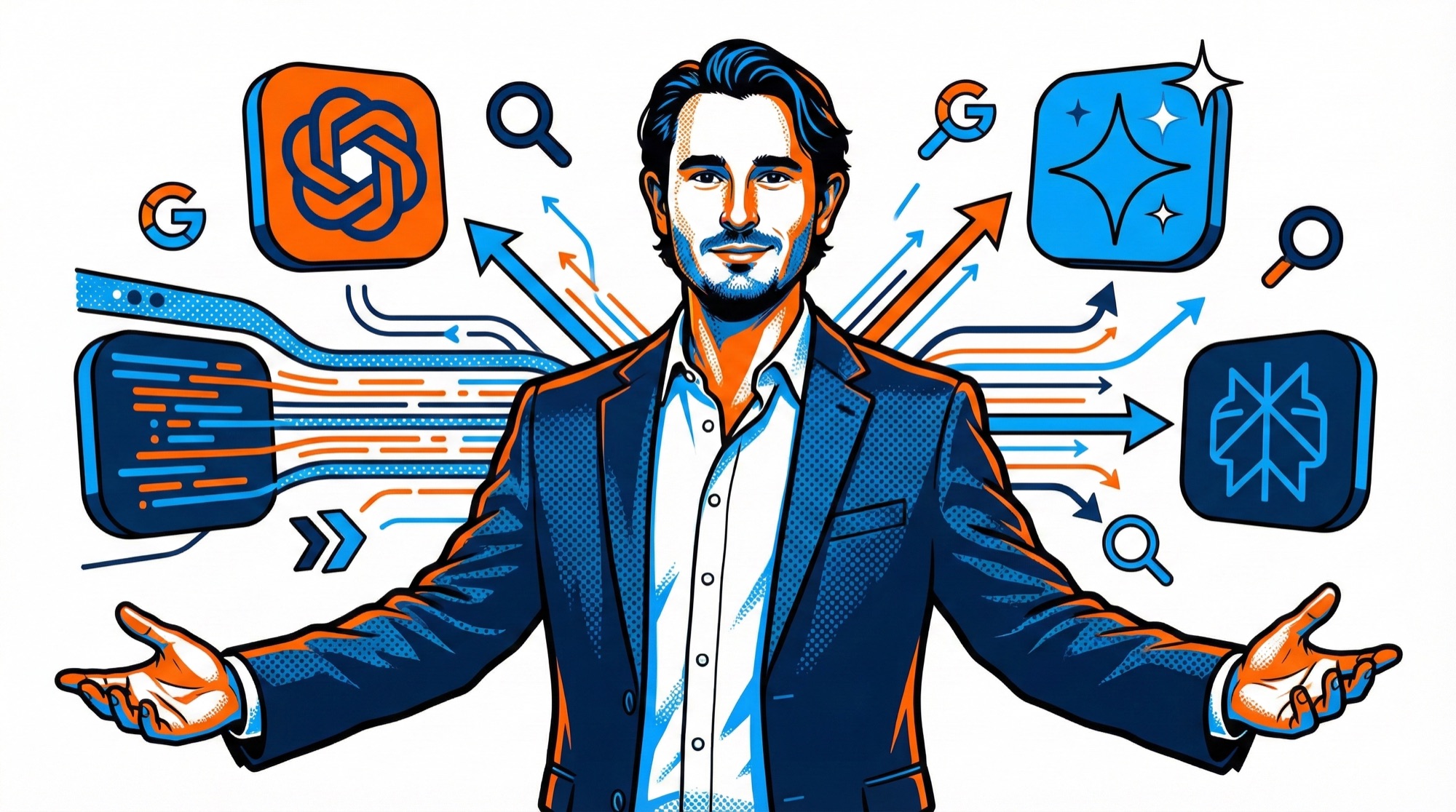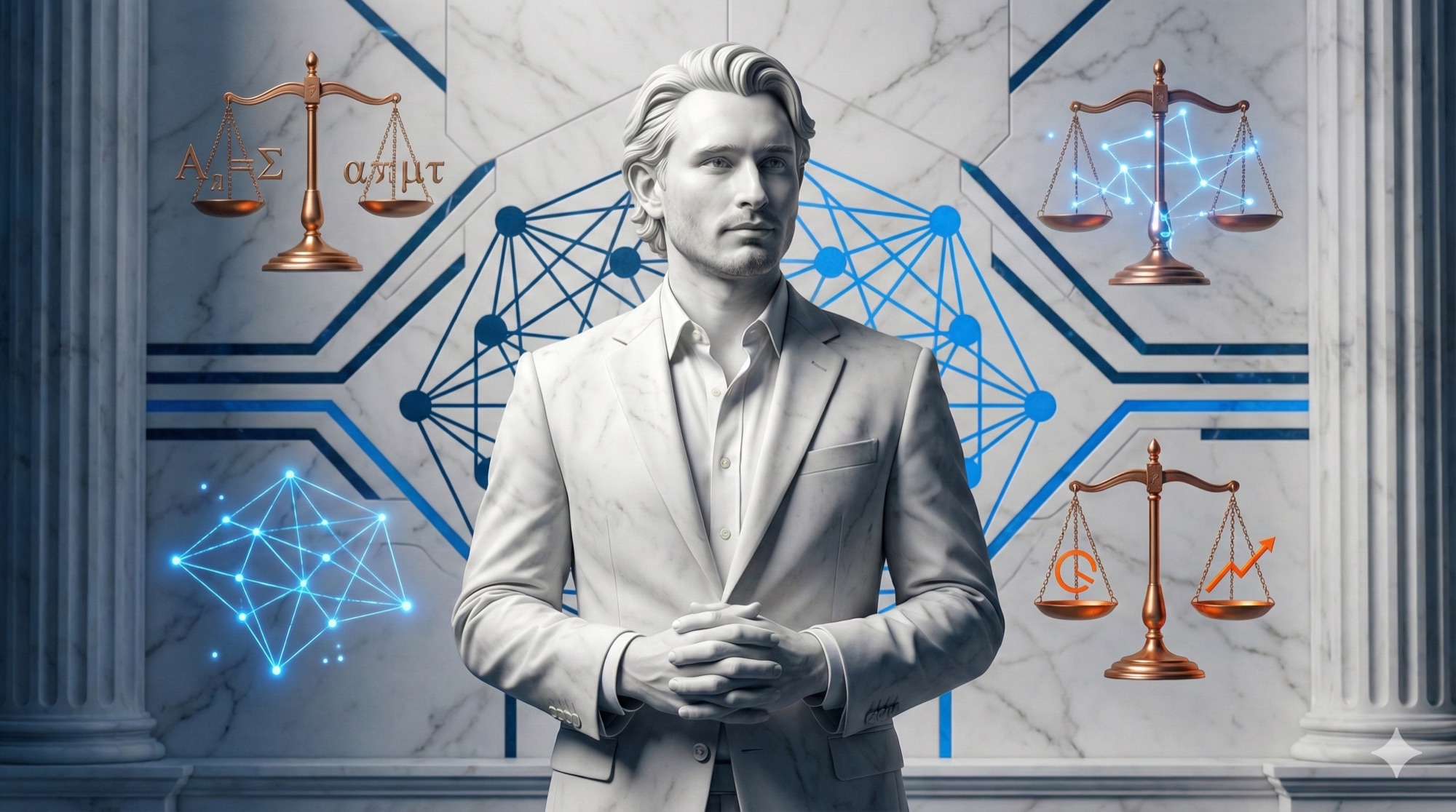
Here’s the thing—everyone’s talking about AI like it’s either magic or hype. But after working with machine learning optimization across dozens of campaigns, I can tell you the reality is more practical than the hot takes suggest. AI optimization isn’t about replacing human judgment. It’s about amplifying what you can accomplish with artificial intelligence marketing tools that actually deliver measurable results.
What Is AI Optimization?
AI optimization uses machine learning, natural language processing (NLP optimization), and predictive analytics to continuously improve marketing performance. Unlike traditional approaches that rely on manual analysis and scheduled updates, AI optimization processes data in real-time, adapting strategies based on live signals rather than historical assumptions.
The core technologies powering this shift include:
- Machine learning algorithms that identify patterns across millions of data points
- NLP optimization for understanding user intent beyond simple keyword matching
- Predictive SEO models that anticipate trends before they peak
- Automated attribution systems that track customer journeys across channels
Here’s how AI optimization compares to traditional marketing approaches:
| Aspect | Traditional Marketing | AI Optimization |
|---|---|---|
| Speed | Weekly optimization cycles | Real-time adaptation |
| Data Processing | Limited by human capacity | Millions of signals simultaneously |
| Targeting | Segment-level rules | Individual-level personalization |
| Keyword Strategy | Density-focused | Semantic search optimization |
| Algorithm Response | Reactive adjustments | Proactive pattern recognition |
The fundamental difference is adaptability. Traditional methods require you to analyze, hypothesize, implement, and wait. AI optimization compresses this cycle to seconds, running thousands of micro-experiments simultaneously.
The State of AI Marketing in 2025
The data tells a clear story: AI optimization has moved from competitive advantage to table stakes.
According to McKinsey’s 2025 State of AI report, 78% of organizations now use AI in at least one business function. In marketing specifically, adoption is even higher—88% of US marketers use AI in their daily workflows.
Key statistics driving this shift:
- $47.3 billion: Current global AI marketing market value
- 65%: Marketing leaders planning to increase AI investment in 2025 (HubSpot)
- 86%: SEO professionals integrating AI into their strategies
- 51%: Marketers using AI specifically for content optimization
The trajectory is clear. Companies that delay AI optimization implementation risk falling behind competitors who are already seeing measurable returns from these digital marketing AI investments.
Key Applications of AI Optimization
AI-powered content optimization touches nearly every aspect of modern marketing. Here are the highest-impact applications.
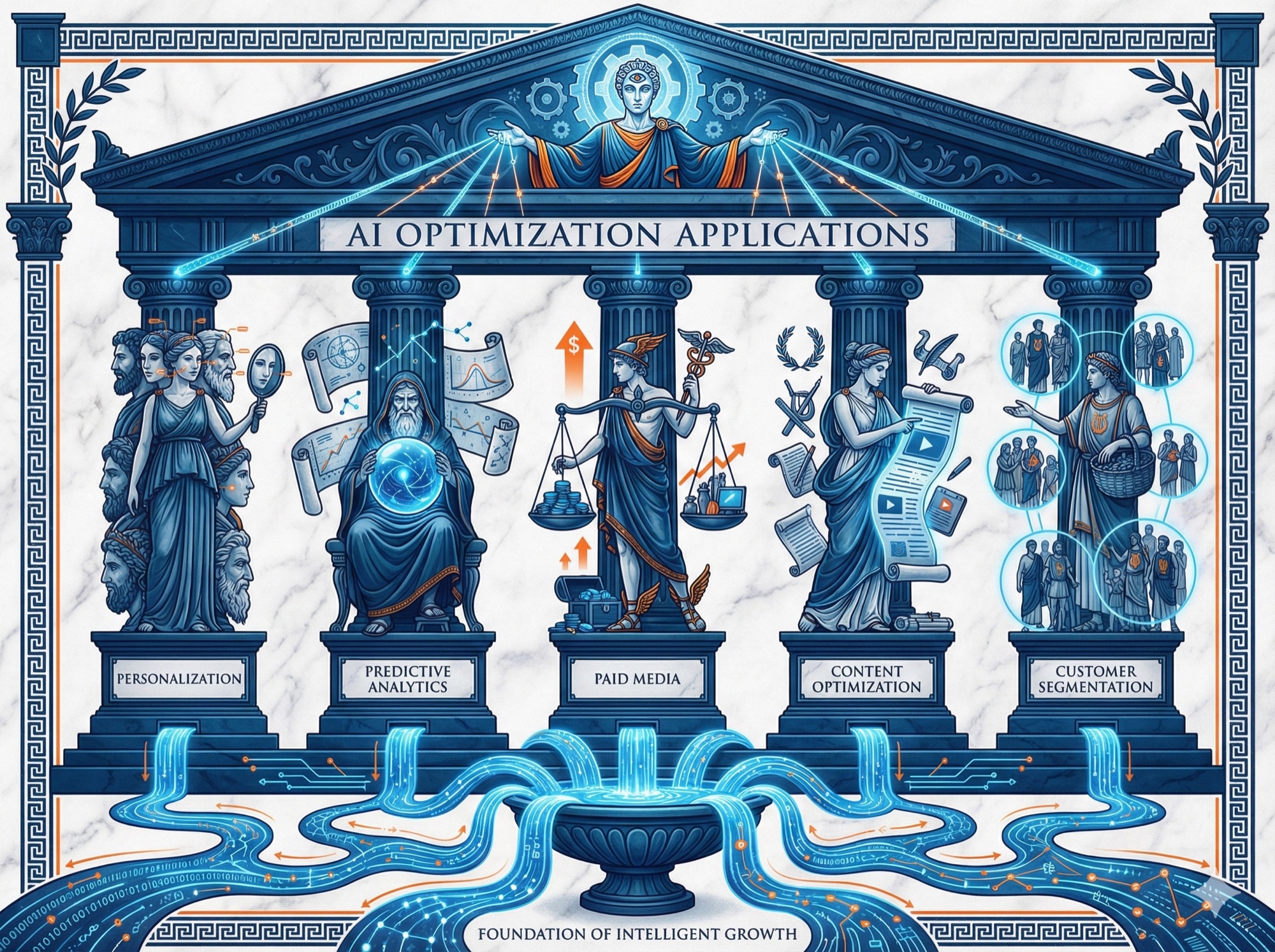
Personalization at Scale
Real-time personalization was impossible at scale before AI. Now, machine learning models analyze behavior, preferences, and context to deliver individualized experiences. Statistics show 73% of marketers use AI for personalization, and AI-driven segmentation yields 32% higher conversion rates compared to traditional segment-based targeting.
Predictive Analytics
Predictive SEO uses machine learning to forecast trends before they emerge. Applications include:
- Identifying high-potential keywords before competition intensifies
- Forecasting seasonal demand patterns
- Anticipating user intent based on behavioral signals
- Detecting content gaps in competitive landscapes
Paid Media Optimization
AI has transformed paid media management. Platforms like Google Performance Max and Meta Advantage+ use artificial intelligence optimization to automate bid adjustments across millions of auctions, allocate budget dynamically, and test creative variations at scale. The results: AI-generated creatives deliver 47% higher click-through rates according to industry benchmarks.
Content Optimization
AI-powered content optimization analyzes search results semantically, clusters keywords by topic rather than individual terms, and identifies opportunities competitors have missed. Over 50% of marketing teams now rely on AI for content creation and optimization tasks.
AI Optimization vs Traditional Marketing
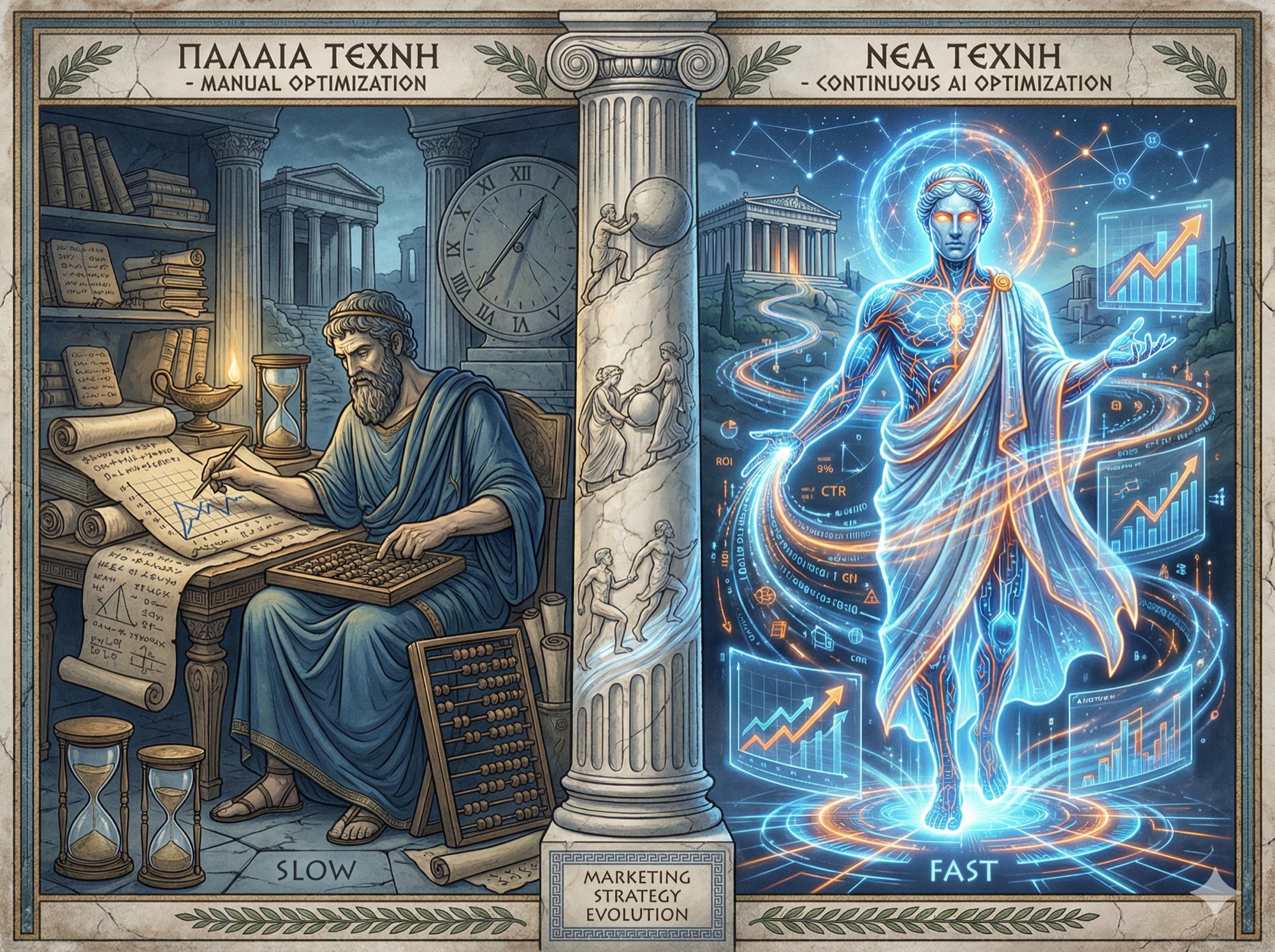
The speed and scale advantages of AI optimization compound over time.
Traditional approach: A marketing manager reviews campaign performance weekly, identifies underperforming elements, makes adjustments, and waits another week to measure results. One optimization cycle takes 14+ days.
AI optimization approach: Machine learning algorithms evaluate performance continuously, testing thousands of variations simultaneously. Winning approaches scale automatically while underperformers are suppressed. Hundreds of optimization cycles happen daily.
Over a quarter, the AI-optimized campaign completes thousands of improvement iterations while traditional campaigns complete perhaps a dozen. This gap in ai ranking factors analysis and response time creates significant performance differences.
This doesn’t eliminate the need for human judgment. Strategic decisions—brand positioning, messaging strategy, audience prioritization—still require human insight. AI optimization executes tactical decisions at speeds humans cannot match while humans provide strategic direction.
The GEO Connection
Generative engine optimization (GEO) represents the next evolution in search visibility. While traditional SEO focuses on ranking in search results, GEO optimizes content for AI-generated answers from platforms like ChatGPT, Perplexity, and Google AI Overviews.
AI optimization and GEO share underlying technologies. The same machine learning capabilities that optimize traditional campaigns help content become “citation-worthy” for LLM optimization. Entity optimization, structured data, and authority signals—all key to GEO—rely on artificial intelligence optimization techniques.
As one industry expert noted: “SEO gets you on the list. GEO makes you the answer.”
For businesses investing in AI optimization, extending those capabilities to generative engine optimization creates compound returns across both traditional and AI-powered search surfaces.
Getting Started with AI Optimization
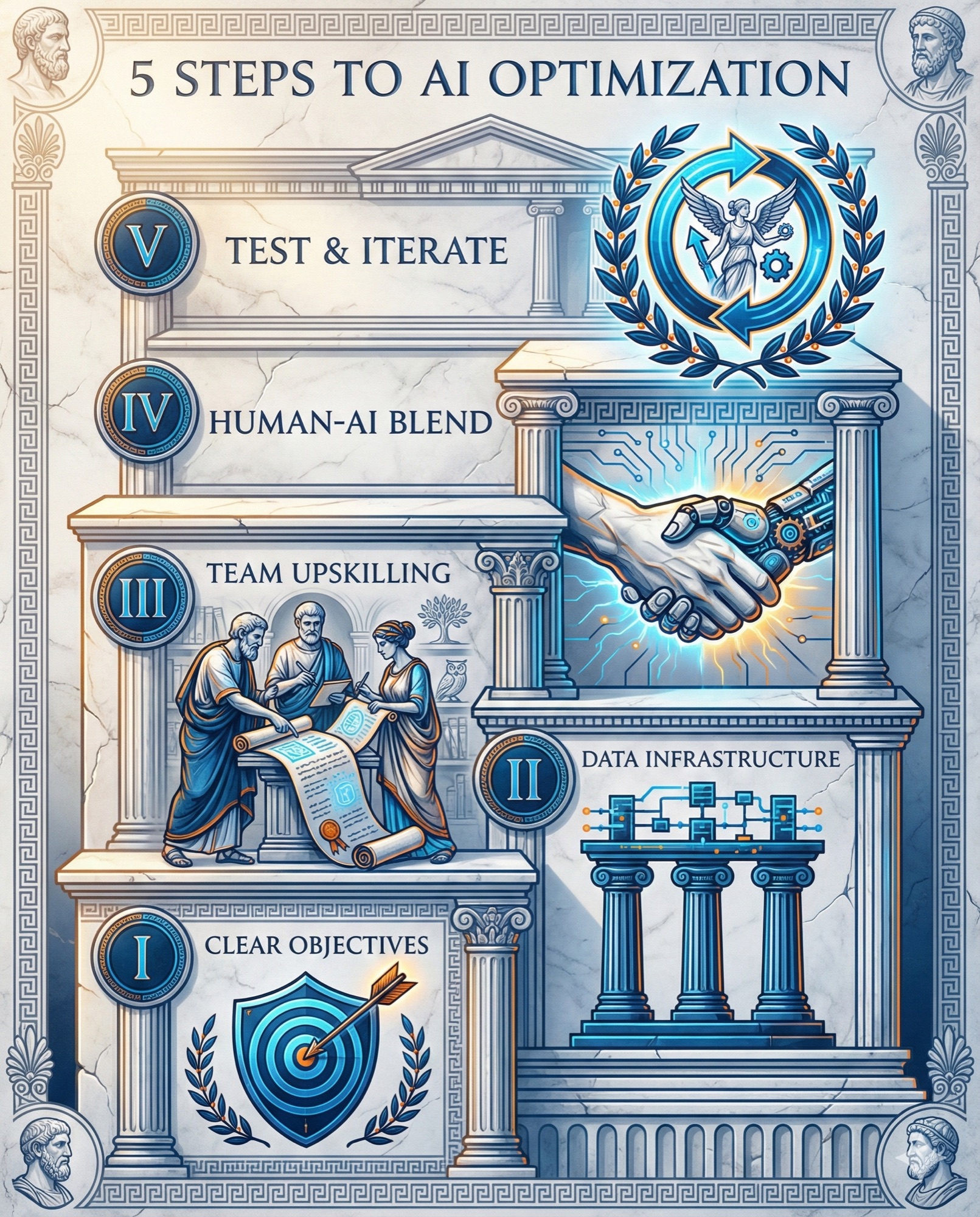
Successful AI optimization requires more than purchasing tools. Here’s a practical framework:
1. Define Clear Objectives
AI optimization is powerful but not magical. Define specific KPIs: conversion rate improvement, customer acquisition cost reduction, or engagement metrics. Vague goals produce vague results.
2. Audit Your Data Infrastructure
AI systems require clean, accessible data. Assess your current data collection, integration between platforms, and measurement capabilities before implementing AI solutions.
3. Start with High-Impact, Low-Risk Applications
Begin with AI content strategy tools for keyword research or predictive analytics for trend identification. These applications deliver value quickly without risking core business processes.
4. Measure and Iterate
Establish baselines before implementing AI optimization. Track performance against those baselines rigorously. AI systems improve through feedback—provide it consistently.
5. Scale What Works
Once you’ve validated AI optimization in one area, apply successful patterns to adjacent applications. The same machine learning optimization principles that improve paid media often translate to content and personalization.
Frequently Asked Questions
What is AI optimization in marketing?
AI optimization uses machine learning and predictive analytics to automatically improve marketing performance across campaigns, content, targeting, and measurement in real-time, without constant manual intervention.
How does AI optimization differ from traditional optimization?
Traditional optimization relies on manual analysis, scheduled updates, and rules-based decisions. AI optimization adapts continuously, processes unlimited data, recognizes patterns predictively, and personalizes at the individual level.
What ROI can I expect from AI optimization?
Research shows 32% higher conversions from AI-driven segmentation, 47% higher click-through rates from AI-generated creatives, and 65% performance improvement for businesses using AI in SEO. Results vary based on implementation quality.
How does AI optimization relate to GEO?
AI optimization powers both traditional SEO and generative engine optimization (GEO). The same artificial intelligence capabilities that improve campaigns help content become authoritative sources for AI systems like ChatGPT and Google AI Overviews.
Matt Kundo Digital Marketing is a data-driven agency helping businesses achieve measurable results through strategic optimization. Explore our services | Get in touch

